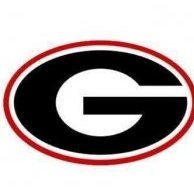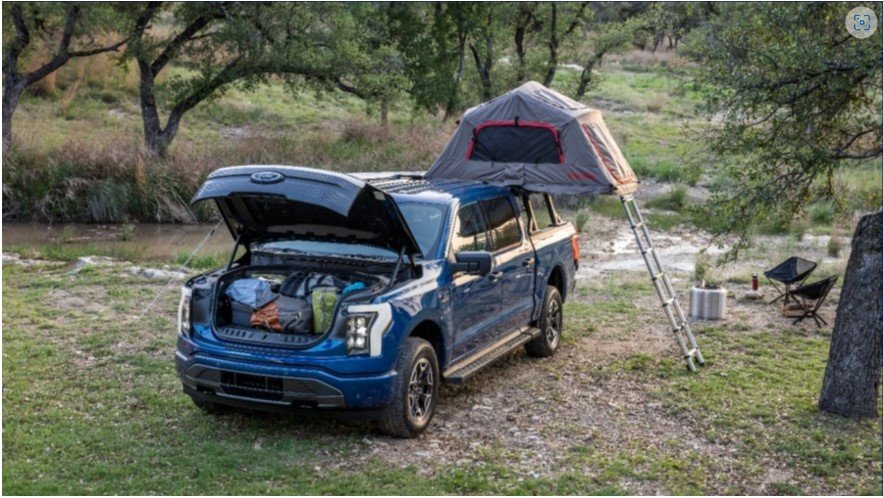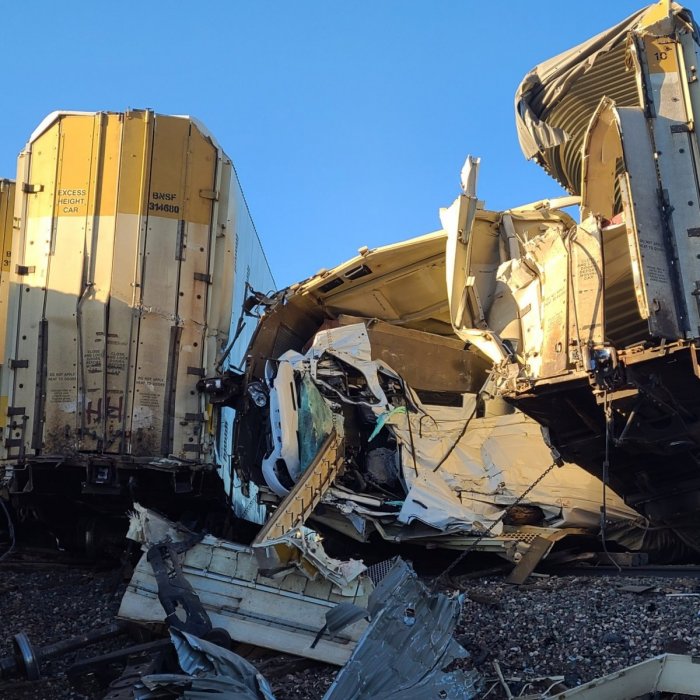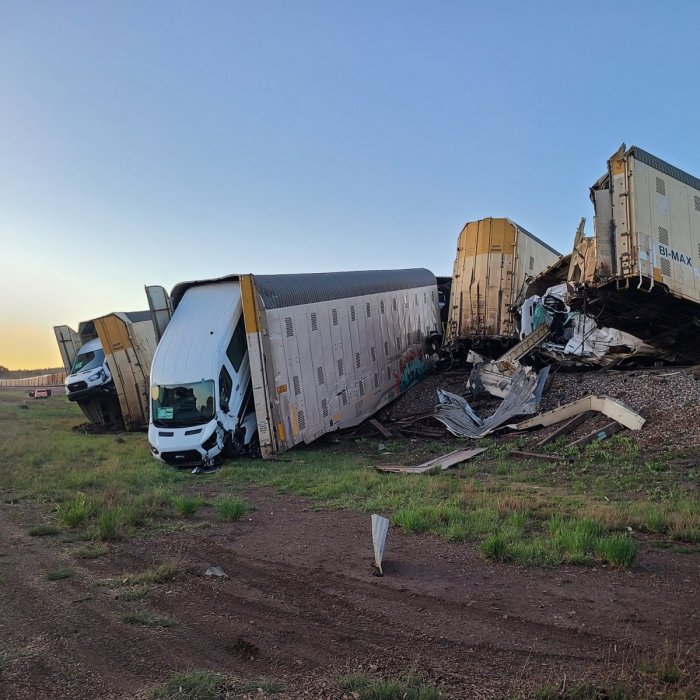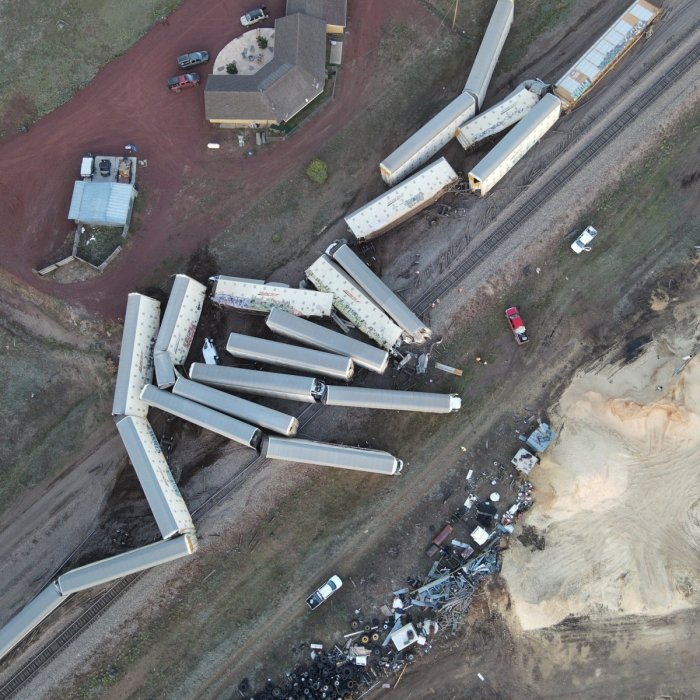Leaderboard
Popular Content
Showing content with the highest reputation on 06/09/2023 in all areas
-
Look how weak that F150 roof is - can’t even hold up a train car……. ?4 points
-
3 points
-
At least from my experience, the Edge had a very loyal owner body and those owners loved the size, the 2-row configuration, the price point, etc. It would be interesting to know what the utilization rate is for those buying 3-row SUV's.3 points
-
Not sure I agree about 2 door Bronco. I think Bronco Sport is in the mix for sure even though it’s smaller. It still leaves a huge void in the lineup for folks who do t want a Bronco or BEV. Edge and Nautilus are in the sweet spot - not too small and not too big. Unfortunately that’s also what makes the segment crowded and super competitive. I thought the ST model would give Ford an edge (pun intended) over the others but while it is a popular model it never really moved the needle much.3 points
-
There's also the flip side of establishing your presence in that segment early and as the segment leader if you're in early. I get the idea, but at the same time, eventually every segment could become a commodity product.....so are they just going to close up shop? It's just annoying to see them in multiple segments basically say "we can't do it, bye"3 points
-
Though I'm a Lincoln guy, I can answer to an extent. If you want a 2-row mid-sized crossover, you generally aren't going to be tempted to go with a 3-row. It is just longer than you want and has a row you won't use. If Lincoln weren't importing the new Nautilus from one of their Chinese factories, I would have gone with a Genesis GV80, Mercedes GLE 450 or Range Rover Sport. They are all designed around two rows and are shorter than the Aviator (though not cheaper), but frankly are still a little bigger than what I want. So I overcame my wish that this wasn't a Chinese import and am going with the 2024 Nautilus. My guess is that if you were an Edge customer you wouldn't be looking at the Explorer. Definitely the Bronco if you like the rugged styling and greater off-road capabilities (whether you ended up using them or not), but otherwise you'd be looking a GM, Hyundai/Kia or maybe Subaru product, but honestly I don't really know the mass-market 2-row mid-sized crossover segment well. If I had the ability to do overnight charging I might have considered the Mach-E, but I don't (yet). Plus, my periodic road trip vacations down to Chincoteague, Virginia on the southern tip of the Delmarva peninsula would have been a bit of a challenge. I expect within a few years that will get fixed.2 points
-
In the grand scheme of things, the Edge was actually replaced by three products- the four door Bronco, 2 door Bronco and the Mach E in price/size The Bronco appeals to the outdoorsy type and offers a convertible experience. The Mach E appeals to sporty/trendy segment2 points
-
Not can’t do it - not worth doing when there are other options. If you run out of better options then you may have to take lower margins. They’re not just dropping models they’re replacing them with new ones.2 points
-
2 points
-
https://fordauthority.com/2023/06/2024-ford-explorer-spied-with-chinese-counterparts-features/1 point
-
Customer Wait Times to Shrink as F-150 Lightning XLT Production Scales - No Reservation Needed For Retail Orders https://media.ford.com/content/fordmedia/fna/us/en/news/2023/06/08/customer-wait-times-to-shrink-as-f-150-lightning-xlt-production-.html# DEARBORN, Mich, June 8, 2023 – Ford is on track to increase production of the F-150 Lightning® at the Rouge Electric Vehicle Center this fall to reduce customer wait times. The high-demand F-150 Lightning XLT model gains the largest initial production increase with new retail orders made today estimated to deliver as early as September. Ford also continues to accept retail customer orders for the Lariat® and Platinum models. “Customer interest for XLT has considerably outstripped supply since the F-150 Lightning launch and we’ve worked with our suppliers to help address that,” said Marin Gjaja, chief customer officer, Ford Model e. “We heard loud and clear from our customers that they want their truck deliveries as close as possible to their orders. As we scale production, we are making this possible.” You can order exactly the F-150 Lightning you want from your local Ford dealer online at ford.com or in-store. The F-150 Lightning XLT, with a starting MSRP1 of $64,474, delivers an EPA-estimated range of 2402 miles. The available extended-range battery has an EPA-estimated range of 3203 miles and 580 horsepower4 starting at $78,874. The F-150 Lightning XLT – with standard range battery and most configurations for extended range battery – is eligible for $7,500 in potential federal tax credits.5 When equipped with the extended range battery and Max Trailer Tow Package, F-150 Lightning offers a maximum towing capacity of 10,000 pounds6. Pro Trailer Hitch AssistTM, an industry first, automatically controls steering, throttle and brake inputs to help make hitching trailers easier. Pro Trailer Hitch Assist is standard with the Tow Technology Package available on XLT. The production increase for the F-150 Lightning is part of Ford’s plan to scale electric vehicles and make them more accessible to customers. Ford is on track to triple F-150 Lightning production by the end of this year to an annual rate of approximately 150,000 units, to help meet customer demand for the high-tech truck. The 2023 MotorTrend Truck of the Year winner, F-150 Lightning is the smartest, most innovative F-150 that Ford has ever built, with the freedom of an available 9.6-kilowatt smart power plant on wheels with Pro Power Onboard, software updates that help make it even better over time and Built Ford Tough capability. F-150 Lightning drivers can access the BlueOval Charge Network, one of North America’s largest public charging network7 with over 84,000 chargers. Starting next year, F-150 Lightning drivers will also have access to more than 12,000 Tesla Superchargers, making it the largest integrated fast-charge network across the U.S. and Canada. Additionally, Ford dealers are adding roughly 1,800 public-facing fast-chargers and locations to the BlueOval Charge Network by early 2024. Customers can order their F-150 Lightning from their local dealer here or in-store.1 point
-
Here's a shot of the diesel V6, similar to above...I'd say its a bit narrower with wise with the turbo tucked under the cylinder head1 point
-
So what about the fact that the front suspension was moved forward by almost two inches and the track width was increased by about the same amount on the 2024? Wouldn't those changes require at the very least different mounting points for the front suspension? If the frame itself is not wider in the front then they would have to use longer control arms in order to increase the track width. The Nano V6s have the turbos attached directly to the cylinder heads, I.E. no separate exhaust manifolds. By not having exhaust manifolds I suppose you could save a little width but it would be more than made up for by the size of the turbos hanging way down there. I wish now that I had looked a little closer at the Ranger Raptor at Carlisle to see exactly where those turbos are placed. I suppose they could be above the frame rails which would go along with Fuzzy's point about the fender aprons having been changed. But the point is that a V6 with turbos hanging off the sides is a much wider beast than any inline engine used in the previous gen Ranger. Keep in mind that international markets also have the option of the 3.0L Powerstroke Diesel V6. Here's a photo of the 2.7 setup from the F-150 which is probably different from the Ranger but at least you can see how the turbos are attached.1 point
-
This fixes the biggest issue I had with it - the odd grille/headlight interaction.1 point
-
40k seems a stretch for such a large vehicle if with acceptable driving range, but I do agree that unless aerodynamics are excellent, there is no chance whatsoever. As a point of reference, the most efficient EV according to Car and Driver list is now Hyundai Ionic 6. It comes with a standard 53 kWh battery which keeps price lower, just above $40k, but with limited range. The extended-range 77.4 kWh larger battery gives it 361 miles of combined range while still keeping starting price under $50k. When C&D tested the long-range RWD Ionic 6 in their steady 75 MPH highway loop, the range was reduced to 260 miles. And that’s with a car that has a coefficient of drag of just 0.22 according to Hyundai. It confirms that when driving at normal Interstate speeds, BEVs have to be very aerodynamic or else will be a huge disappointment. Ford Lightning with extended range 131 kWh battery, when using C&D 75 MPH test data, and Ford charging data, on a very long road trip would need to charge every 150 miles (2 hours of driving) requiring at least 44 minutes to charge from 15 to 80 percent, so stop would likely take an hour or longer by time driver gets off highway, plugs in, and gets back on road. I could never spend 1/3 of my time associated with charging. For drivers who want a BEV suitable for long road trips, I don’t see a way around sleek aerodynamic shapes until battery capacity and charging rates improve significantly. Yeah, the Ionic 6 doesn’t look great to me, but at least it functions better on paper than most BEVs.1 point
-
Obviously need to wait until we actually see it, but looks "weird" under the cover. I've thought that Ford's main advantage in the BEV space so far has been making the vehicles look "normal" and not like some space age thing. Lightning, Transit, and even Mach-E look manage to look like a normal ICE vehicle that just so happens to be powered by a battery. Tesla manages good aero without going over the top and making them strange looking (cyber truck excluded, but I'd guess that's bad aero just for the sake of being weird/"futuristic"). The GM EV products are weird just to be weird and prove they're different it seems like. I guess there's a market for that, but personally don't think Ford needs to be there.1 point
-
1 point
-
It’s hard to tell for sure but if they’re building and delivering new ones that indicates they at least think they have the problem fixed on new builds but as you guys say they’re probably trying to find a fix for existing vehicles that doesn’t require engine replacement. This is where I’d like to see Ford offer trade in at full market value with x plan pricing plus a $3k discount towards any new Ford. Or just do a buyback at market value.1 point
-
Sure seems like they're either unsure what the exact problem is, or, more likely, what they are willing to do about it. 22S47 attempted to address "fluid dynamics" to decrease the risk that engine failure would lead to engine fire. All they did was take away some of our AGS vanes and punch a few holes in the bottom for ventilation, which Ford acknowledges in the docs linked above, didn't really do anything. Who would've thought? It's about as effective as trying to address engine failure with software. Turns out, vehicles that had these "modifications" performed - whether via recall or as a running change at the factory - still catch fire when the engine fails. They seem to be looking for an alternative to inspecting and potentially replacing up to in excess of 100,000 long blocks (which could easily exceed $100,000,000 if enough need replacement). At the same time, they're basically telling drivers that there's an unnecessarily high risk of failure/fire due to "isolated engine manufacturing issues". They also go on to acknowledge that they were having issues building the engines to an acceptable quality level, particularly focused around the crankshafts. Apparently building crankshafts is new for Ford... They seem fairly confident that after they finally completed their "robustness actions" on/before September 1, 2022, the risk of engine failure is significantly reduced - so far, they haven't had any reports of engine failure from engines built after this date, but it has only been ~9 months. Any units that have been built before the 3 listed dates in May are supposed to be on hold indefinitely. With Ford, we should really assume they mean there won't be any additional info until end of Q4, meaning by the end of the year. Then, they need to actually get any necessary parts available to dealers and we'll need to get appointments to bring in the affected vehicles for whatever the "remedy" is this time. Just hope it's better than making a few holes to improve "fluid dynamics" like they tried to use to get out of properly addressing the units with "isolated engine manufacturing issues". That said, several over on MTC have reported that there newer 2023s don't yet list the recall at https://www.ford.com/support/recalls/ so as far as the dealer is concerned, it's not actually been recalled (yet). Thus, they've been able to take delivery. Speaking of those taking delivery in recent weeks/months (?), some have interestingly noted the Parts Content Information sticker on the vehicle cites the ICE as coming from US. Last we heard publicly, it was only built at Chihuahua Engine Plant (#1) until late 2022 when Valencia Engine Plant (Spain) brought it online for the European market (Kuga)... Is this erroneous, or does it indicate that either ChEP1 cannot build enough of these engines or to the desired quality level? So far, haven't seen anyone post a sticker on the engine confirming it was built in the US, unless someone here knows which plant that might be. As for the engine, it's not been the exact same one on this platform the entire time. The current version launched with 2020 Escape, just before the pandemic in 2019. They started off with a 2.3L, then bumped it up to 2.5L for 2009. Fusion picked up that same 2.5L the next year. Both carried it through 2012. In 2013, Escape 3G was launched with no hybrid option. Instead, C-Max took over its role alongside Fusion until US production of C-Max Hybrid/Energi were phased out alongside Focus at MAP. During that transition in 2013, they also launched the "Energi" PHEV variant, using the same ICE but a bigger battery pack, etc. For MY2020, Fusion was winding down on the 2.0L variant while Escape brought back a 2.5L, this time with PHEV variant. Given some of the issues Ford has acknowledged revolve around crankshaft machining (including 22S10 that only inspected/replaced a small batch of crankshafts/long blocks), it seems that the line they activated to bring back the 2.5L has had some... issues from the start. Atkinson-cycle engine timelines: 2005-2008 Escape 2.3L 2009-2012 Escape 2.5L 2020-2023+ Escape 2.5L (FHEV + PHEV) 2010-2012 Fusion 2.3L 2013-2020 Fusion 2.0L (FHEV + PHEV) 2013-2018 C-Max 2.0L (FHEV + PHEV)1 point
-
New Ford Vehicles Heavily Damaged in Arizona Derailment https://fordauthority.com/2023/06/new-ford-vehicles-heavily-damaged-in-arizona-derailment/ Incidents involving trains are certainly nothing new, but in recent months, these types of problems have seemingly been rearing their ugly heads more often than usual. Regardless, we’ve seen more than one train derailment result in damage to new Ford vehicles, including an incident in 2020 that destroyed a slew of Ford Explorer and Lincoln Nautilus crossovers, as well as another in 2021 that smashed up a bunch of Ford F-150 pickups. Now, it has happened yet again, as around 20 train cars have derailed in Coconino County, Arizona, according to ABC 15 news. According to BNSF Railway, the incident happened late Wednesday night, though it’s unclear what might have caused the derailment, as an investigation is currently underway. However, we do know that the cars were carrying a variety of new Ford vehicles, along with other models, all of which sustained heavy damage as a result of the crash. Luckily, there have been no reports of injuries at this time, at least. “BNSF Railway can confirm that at approximately 11:20 pm on June 7th, approximately 20 automobile cars derailed in Williams, AZ (35 miles west of Flagstaff, AZ),” the company said in a statement. “No injuries or hazmat involved. Cause is under investigation.” It’s unclear how long it will take to clean up this giant mess, but judging from the photos provided by Coconino County Emergency Management, it won’t be an easy task by any measure. In these pictures, we can see a number of Ford Transit vans and Ford F-150 pickups, meaning that there are likely many other new Ford vehicles buried in this massive wreckage, though it’s unclear just how many total vehicles were onboard the 20 or so cars at the time of the derailment.0 points

